The 21 Best Homebrewing Books Written by Expert Brewers
Our list of homebrewing books wouldn't be complete without the great Charlie Papazian. Other names of note include Daniels, Lewis and Palmer.
Written by CraftJack | Updated | 11 min read
Interesting Tools
- Beer BrüMate Hopsulator
- Brewing Northern Brewer Beer Making Kit
- Spirit Crystal Whiskey Glasses
- Wine Wine Decanter/Aerator
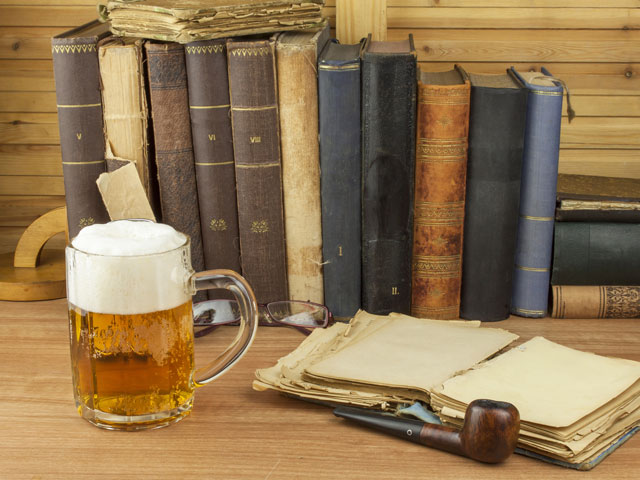
Here are a slew of really great books to help get you started on the art and science of brewing. Beyond simply brewing beer, these homebrew books will help you with kegging your own beer, recipe formulation, the extract brewing process, why water chemistry matters, and even simple, 101-style things like basic education on what makes a good lager.
Additional topics include how to set up your own brewhouse, how to brew your own Belgian-style beers (as an example), and what the Brewers Association can offer the aspiring craft beer entrepreneur. Who knows, after reading all of these books you may just win a homebrew competition.
Oh, and let's not forget the most important part of designing your own recipes: tasting beer, beer that you made on your own (or with a friend). If there is one piece of advice that we can give you, it's this - there's a surefire way to brew better beer when starting down the homebrew path, and that's to write down your homebrew recipes in a recipe book. No doubt that guy from Dogfish Head still writes down his own recipes. And if he does it, and other pro craft brewers do it, you should too.
List of Homebrewing Books
- The Complete Joy of Homebrewing by Charlie Papazian
- The Homebrewer’s Companion by Charlie Papazian
- Yeast: The Practical Guide To Beer Fermentation (Brewing Elements) by Chris White and Jamil Zainasheff
- The Complete Homebrew Beer Book by George Hummel
- Home Brewing: A Complete Guide On How To Brew Beer by James Houston
- Brewing Classic Styles: 80 Winning Recipes Anyone Can Brew by Jamil Zainasheff and John Palmer
- How To Brew: Everything You Need to Know to Brew Great Beer Every Time by John J. Palmer
- Malt: A Practical Guide from Field to Brewhouse (Brewing Elements) by John Mallett
- How To Brew: Everything You Need To Know To Brew Beer Right The First Time by John Palmer
- Water: A Comprehensive Guide for Brewers (Brewing Elements) by John Palmer and Colin Kaminski
- Homebrewing For Dummies by Marty Nachel
- Brewing (2nd Edition) by Michael J. Lewis and Tom W. Young
- Homebrew Beyond the Basics: All-Grain Brewing and Other Next Steps by Mike Karnowski
- IPA: Brewing Techniques, Recipes and the Evolution of India Pale Ale by Mitch Steele
- Mastering Homebrewing: The Complete Guide to Brewing Delicious Beer by Randy Mosher
- Radical Brewing: Recipes by Randy Mosher
- Designing Great Beers: The Ultimate Guide to Brewing Classic Beer Styles by Ray Daniels
- For the Love of Hops: The Practical Guide To Aroma by Stan Hieronymus
- A Handbook of Basic Brewing Calculations by Stephen Holle and Ray Klimovitz
- The Complete Guide to Growing Your Own Hops, Malts, and Brewing Herbs by John N Peragine
- How NOT To Start A Damn Brewery: Ten Business Lessons From The Front Lines of The Craft Beer Industry by Kelly KfM Meyer
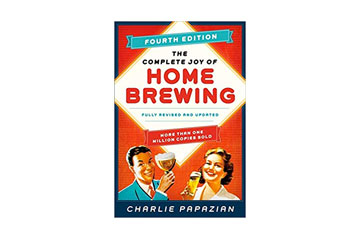
The Complete Joy of Homebrewing by Charlie Papazian
The book of books when it comes to homebrewing. Brewers reference Charlie by name when they talk about their history and how they got their start. Others, such as White Mountain Brewing in New Hampshire hang artwork on the wall in reference to the man.
Covering all styles of beer, The Complete Joy of Homebrewing is the definitive guide to understanding not only brewing, but beer itself. This guide has everything you need to get started at home, including how to build a home brewery and how to craft recipes. Papazian covers the history of beer, as well as the science and technology behind it.

The Complete Joy of Homebrewing
Charlie Papazian gives you everything you need to know about how to brew beer right in the comfort of your home.
Buy on AmazonThe Homebrewer’s Companion by Charlie Papazian
Papazian, known as the "godfather of homebrewing," is back at it again. In The Homebrewer's Companion, originally released in 2003, Papazian takes readers on a hands-on journey beyond the fundamentals of homebrewing in this engaging, easy-to-follow book. This second edition (2014) of the famous volume has extensive charts and tables, the most up-to-date techniques and equipment information, new recipes, and much more.
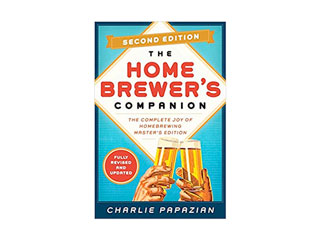
The Homebrewer's Companion
Charlie Papazian guides you past the basics with updated recipes and brewing techniques.
Buy on AmazonYeast: The Practical Guide To Beer Fermentation (Brewing Elements) by Chris White and Jamil Zainasheff
Yeast: The Practical Guide to Beer Fermentation is a resource for brewers of all skill levels who want to learn more about fermenters and the fermentation process. White and Zainasheff address a wide range of topics, including yeast selection, storage and management of yeast cultures, how to cultivate yeast, and the art of rinsing and washing yeast cultures, among others. The book will also walk you through the fundamentals of fermentation science and how it impacts your beer, the equipment you will need to start your own yeast lab, and more.
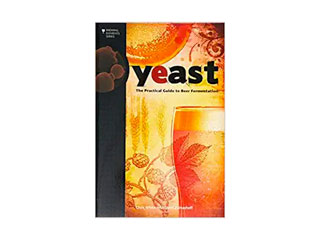
Yeast: The Practical Guide To Beer Fermentation
Chris White and Jamil Zainasheff cull together this Brewing Elements entry all about yeast.
Buy on AmazonThe Complete Homebrew Beer Book by George Hummel
Fairly audacious to name your book, The Complete Homebrew Beer Book. Hummel follows through though, teaching you how to brew, ferment, and (maybe most importantly?!) drink world-class beers in your own kitchen.
The author takes the reader step by step through the process of making a foundation to which the homebrewer may add a variety of fascinating flavorings, including as fruits, spices, and even smoke, to create a beer that is really unique and personal to them. The simple-to-follow directions and detailed analysis of the flavor components of beer provided by Hummel enable even the most inexperienced homebrewer to build recipes and create brews to fit any taste or craving. There are other advantages to knowing exactly what is in a beer; for example, homebrewers may easily eliminate the chemical additions that are usually present in mass-produced commercially popular brews.
As an extra benefit, the recipes are divided into categories based on their level of complexity, allowing new brewers to start with recipes that are within their comfort zone before progressing to those that need more advanced abilities. Plus, Hummel includes a glossary of beer terms to help readers find answers to questions they may have regarding the ingredients or equipment.
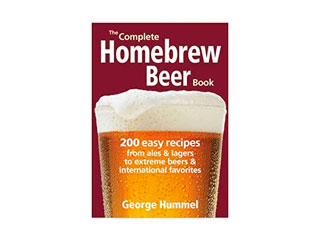
The Complete Homebrew Beer Book
You can thank George Hummel for 200 Easy Recipes, from Ales and Lagers to Extreme Beers and International Favorites in his The Complete Homebrew Beer Book.
Buy on AmazonHome Brewing: A Complete Guide On How To Brew Beer by James Houston
A fantastic book for beginners, Home Brewing: A Complete Guide On How To Brew Beer walks you step-by-step through jumping over the hurdle of brewing beer #1. Author, James Houston, also hands over a thorough list of equipment that you will need and with suggested recipes. The book will also help guide you to additional brewing resources such as other apps, forums and websites to visit to learn more about the craft.
Consider this a solid 101 on the topic.
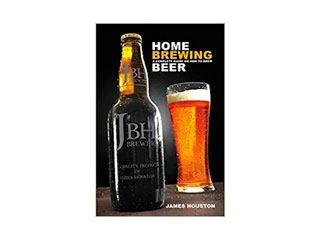
Home Brewing: A Complete Guide On How To Brew Beer
The title is lofty, but James Houston holds your hand for picking out equipment and recipes to get brewing with.
Buy on AmazonBrewing Classic Styles: 80 Winning Recipes Anyone Can Brew by Jamil Zainasheff and John Palmer
Zainasheff and Palmer deliver 27 chapters of brewing gold, covering those 80 beer recipes across nearly every style out there. Alongside those recipes are years worth of experience laid bare through a wealth of brewing tips, notes and advice on ingredients, how to innovate and improve your brewing quality, and more.
Somewhere in this book should be a recipe specifically dedicated to lawnmower beers.
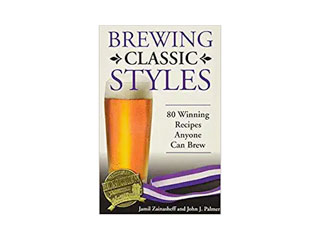
Brewing Classic Styles
Who needs 70 winning recipes when you can have 80? Thanks for that, Jamil Zainasheff and John Palmer
Buy on AmazonHow To Brew: Everything You Need to Know to Brew Great Beer Every Time by John J. Palmer
With How to Brew, anybody can make great beer at home. This third edition helps not only the first-time homebrewer looking for straightforward, foolproof directions, but also experienced brewer who is looking to go in-depth on topics. John Palmer does an excellent job of explaining brewing as both art and science in a conversational, relaxed tone. How to Brew is jam-packed with useful information on homebrewing techniques and recipe creation, from ingredients and processes to recipes and equipment.
This best-seller is a must-add to every homebrewer's library. One of the focuses on the book is on the, "top six priorities" - fermentation temperature control, good recipes, sanitation, the boil, water and yeast management. The only thing it doesn't cover is how to name your beers.
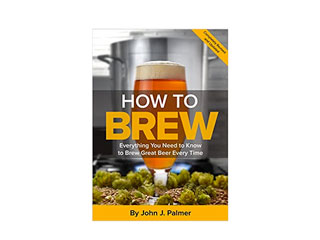
How To Brew
John J. Palmer said it best when discussing his book, it's, "Everything You Need to Know to Brew Great Beer Every Time"
Buy on AmazonMalt: A Practical Guide from Field to Brewhouse (Brewing Elements) by John Mallett
This book, like the others in the "Brewing Elements" series, focuses on a single brewing ingredient in great detail: Malt. Chemistry, history, and the anatomy of barley itself all have their own chapters. This book takes a fairly deep dive on the varieties and families of malts, so you're in for a treat. Further, it addresses how to store malts, how to mill them, and, how to conduct home malting. This knowledge will only help you become a better and more thorough homebrewer, allowing you to brew the best beer you can.
How To Brew: Everything You Need To Know To Brew Beer Right The First Time by John Palmer
One of the best and most complete compendiums on the topic of brewing, Palmer's, "How to Brew: Everything You Need To Know To Brew Beer Right The First Time" lives up to its promise. If you are a novice brewer (and we all started that way) and you were going to buy one book on the subject, this may very well be your first book. There are over a dozen and a half beer recipes that range in difficulty and experience level. There is a clear and logical progression to the information that cascades across Brewing 101 topics to the more advanced.
Seasoned brewers can still learn a thing or two about the brewing process even after 20+ years of reading Palmer's wisdom. We certainly recommend that you check out the 4th edition of, "How To Brew".
Water: A Comprehensive Guide for Brewers (Brewing Elements) by John Palmer and Colin Kaminski
Palmer is prolific, and on, "Water: A Comprehensive Guide for Brewers", he teams up with Kaminski to discuss everything you ever wanted to know about arguably nature's greatest compound. Equations make our brain hurt, but they are necessary to making sure you don't foul up the "water chemistry", if you'll permit us such a term, of your homebrew.
This is important because every city/town/rural area sources their water from different aquifers and resevoirs. And, they put their water through a variety of distinct filtration processes. In short, if two homebrewers in adjacent towns follow the same beer recipe, using the same grain ratios, the same adjuncts, the same extracts, etc., and, used the very same homebrewing equipment, and, they found a way to complete each step at precisely the same measurements, temperatures, and timing, it's still possible for the beer to taste starkly different based on the water supply.
Palmer and Kaminski wrote the Water installment of Brewing Elements to address those concerns. Rest assured, you're in good hands reading this.
Homebrewing For Dummies by Marty Nachel
There's even a little yellow "For Dummies" book for brewing beer. Nachel's work is beyond serviceable, delivering dozens of recipes, separating out the beginner from the advanced, covering bottling, ciders, gluten-free, and kegging, and doing so while trying to retain the everyday, no-nonsense summary-feel of the "For Dummies" lineup. Papazian and Palmer it is not, but it doesn't need to be.
Brewing (2nd Edition) by Michael J. Lewis and Tom W. Young
Some of the books in this list were written for the entry-level homebrewer. Brewing is not one of those books. Lewis and Young take you on a journey through contamination, cleaning, fermentation, packaging and other aspects of the trade. We recommend that you start with entries from Houston or Palmer before tackling upper-level concepts. In plain English, brew a batch or two before opening up this text book. You'll be glad you did.
Homebrew Beyond the Basics: All-Grain Brewing and Other Next Steps by Mike Karnowski
Much like Lewis and Young's 2nd Edition of Brewing, you're going to want to complete your introductory brewing coursework prior to going, well, going beyond the basics with Karnowski. Karnowski's goal is the maturation of your skillset and refinement of your technique. He helps guide you through the ins and outs of utilizing all-grain recipes and what effect, if any (in fact, lots), using an all-grain brewing process will have on your beer. Karnowski covers more than just brewing with alternative ingredients, he covers using new hop varieties and mixed culture fermentation.
Once again, not the first book you should read on the topic.
IPA: Brewing Techniques, Recipes and the Evolution of India Pale Ale by Mitch Steele
There are so few commercial breweries in the United States today that don't produce IPAs these days that we'd swore that everyone in the country read Mitch Steele's ode to the India Pale Ale. Steele has the credentials to back it up too, having graduated from UC Davis with a degree in fermentation science. Steele was also a brewer at Stone Brewing Company in Southern California, so he knows a thing or two about IPAs. Written with the goal of improving the flavor profile of your hoppiest pale ales, Steele's book includes recipes from, Dogfish Head, Russian River, Deschutes, Stone and Firestone Walker - all big names there.
Mastering Homebrewing: The Complete Guide to Brewing Delicious Beer by Randy Mosher
Mosher simplifies the intricacies, encouraging and instructing today's home brewers with his definitive guide to homebrewing. Globally renowned, Randy Mosher authors a manual that covers everything from picking ingredients and equipment through mashing, bottling, tasting, and serving. In essence, a book on how to master homebrewing.
Radical Brewing: Recipes by Randy Mosher
Mosher's entry on the list is anything but typical. Radical Brewing is well-named, as it tends to go off the rails a bit in the best possible way. A part of us even wonders if Weld Werks got their idea for ¡SPONCH!, a Sour Berliner-Weisse that tastes like Willy Wonka made a dodgeball out of beer, from reading Radical Brewing. This is another book that features over 100+ recipes that span the entire litany of craft beer styles. We'd even go so far as to say that it might be good pre-homebrewing reading just to get you excited enough to follow through on your dreams, in much the same way that listening to Jimi Hendrix might have inspired you to pick up a guitar.
Designing Great Beers: The Ultimate Guide to Brewing Classic Beer Styles by Ray Daniels
Here's a quick rundown of Designing Great Beers: The Ultimate Guide to Brewing Classic Beer Styles.
- 404 Pages
- 14 chapters devoted to major beer styles
- Hop Varieties
- Yeast Strains
- Water Treatment
- Typical Alpha Acid Levels
Ray Daniels offers up a copious tutelage across those 400+ pages. Give it a read, you won't be disappointed.
For the Love of Hops: The Practical Guide To Aroma by Stan Hieronymus
Another entry in the Brewing Elements series, Stan Hieronymus gives us 326 pages worth of details about the world of hops. He asserts that while hops are revered by today's craft brewers, many are unaware of the trip they take to get there. He also covers over 100+ hop varieties that are in use today, along with statistical data on hop yields, the land needed to grow, diseases that affect the hop plants and the challenges of farming them. Further, he covers the natural differences of hops grown across Eastern and Western Europe, North America, and Australia and New Zealand.
It's an interesting read even if you aren't a homebrewer. It's even more fun if you're the type who will follow through on the farming and experience the joy of home growing hops. We really dig Hallertau Hops.
A Handbook of Basic Brewing Calculations by Stephen Holle and Ray Klimovitz
Holle and Klimovitz definitely sound like college math professors, right? This equation-heavy and formula-driven book on the math of brewing beer is tailor-made for you to dial in every setting on your brewing equipment and fine tune every measurement of ingredient, including the proper amount of hops, malts, yeasts, etc. for every situation.
As we said before, equations make our head hurt. But, they are an integral part of the process and many enjoy them. Not us, we got into homebrewing because we enjoy tasting beer.

The Complete Guide to Growing Your Own Hops, Malts, and Brewing Herbs by John N Peragine
Who doesn't want to grow their own hops? Peragine gives us, "Everything You Need to Know Explained Simply (Back to Basics Growing)".
Any aspiring brewer will benefit from this book's step-by-step instructions on how to cultivate their own brewing materials from seed to harvest. Discover how to produce your own beer ingredients, including the ability to manage the maturity, strength, variety, and volume of those ingredients. Learn how to make your own brewing herbs and how to put them all together to make your own beer.
Knowing what to plant and how to grow can be difficult when there are over fifty varieties of hops and hundreds of brewing herbs to choose from, especially when they must be combined perfectly for the beer to taste delicious.
How NOT To Start A Damn Brewery: Ten Business Lessons From The Front Lines of The Craft Beer Industry by Kelly KfM Meyer
This book was an enjoyable read. These ten lessons that Kelly shares, and boy does he share them, feel as though they should be obvious to any prospective brewery owner. Read this book if you're thinking about opening up your own taproom. But be warned, the KFM in Kelly KFM Meyer stands for, "Going to tell you what he thinks in colorful language."
If you're a brewer, you're probably used to it though.
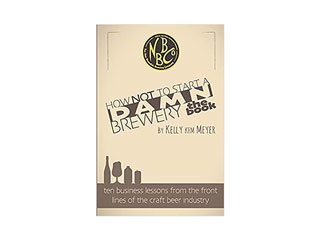
How Not To Start a Damn Brewery (the book)
Kelly Meyer, owner of New Braunfels Brewing in Texas, shares his ten lessions on how not to start a brewery.
Buy a Copy
